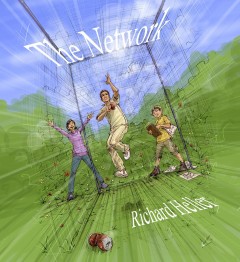YP Cricket… the sport that age cannot wither
published in the Yorkshire Post 11 May 2013
As I write these lines, Joe Root and Jonny Bairstow may not play again for Yorkshire this summer as county cricket continues to be marginalized by international games and a fixture list arranged by a demented computer.
In the lower reaches of cricket, which I inhabit, there is the same confusion and loss of rhythm. Matches against familiar opponents have disappeared from their accustomed dates, displaced by pressures from competitions or representative fixtures which rob teams of the young and talented. Blank patches in the fixture list alternate with frenetic bursts of activity.
As this turbulent season opens, only one thing can be predicted with certainty. Despite public promises of retirement last year, thousands of superannuated, incompetent cricketers will turn out for another summer.
I know because I am one of them, in the sunset of a career on which the sun never in the fullest and truest sense actually rose. I am a slow-medium bowler who moves the ball both ways off the bat. I am asked to bowl less and less often, but am sometimes called up when the opposition send their ten-year-old to the crease. After a few deliveries, he often asks if he can remove his helmet: at the opposite end, his mother generally agrees. In batting, a place above number 9 gives me a nosebleed. In fielding I get hidden in the slips.
[omitted from published version At this point, I should say that I have never had the privilege of playing cricket in Yorkshire, where cricket is taken seriously. Yorkshire has produced many players with very long careers, especially George Hirst, who had 27 county seasons and Wilfred Rhodes, with 29. They did not get picked out of sentiment, but as performers. In his last match for Yorkshire, Wilfred Rhodes dismissed five of the powerful 1930 Australian side and had Don Bradman missed at 0 by a dozy mid-off. Maybe in Yorkshire my playing career, even in the lower depths, would have been terminated years ago when it should have been. But I continue to play in the soft South – and so do many other players who are actually worse. omission ends]
Why does cricket allow us to maintain our illusions so much longer than other sports? I think there are two reasons, one negative, one positive.
First, cricket offers more excuses for failure than any other sport, or indeed any other human endeavour. As a footballer you know that you have become too slow to win the ball from the opposing winger (or even get within fouling distance). As a tennis player, you know why you cannot return the opposing serve. As a bridge player, you know that you should have led a spade not a heart, and your partner will make that clear if you have failed to work it out for yourself. But when you get bowled at cricket, there are myriad possible reasons which do not reflect on your ability – a bad pitch, sudden movement behind the bowler’s arm, and of course, the tricky light, whether too dim or intolerably glaring. These days you can also claim that the bowler delivered a “doosra” or made the ball “reverse” impossibly late – even when he is the opposition’s ten-year-old.
As a bowler when you are hit for six, you can always murmur “just tempting him” as Captain Mainwaring did in the Dad’s Army episode when Fred Trueman made a guest appearance.
As for misfielding and dropped catches, the batsman’s excuses of pitch, crowd disturbance, dimness or glare are usually serviceable. If the light is perfect, you can usually invoke the background, whether it is immemorial elms or a distant nuclear reactor.
But conversely, I believe that cricket gives even mediocre performers occasional moments of excellence, when they actually do something as good as any of the legends of the game – one boundary like Sobers, one leg-break like Warne, one stop in the field like Jonty Rhodes. It is irrelevant that Sobers and company produced their achievements routinely and deliberately, while the no-hopers produce theirs exceptionally and usually inexplicably. The fact is that they happen, and they allow the no-hopers to feed their self-image for a long time. Of course, other sports offer these moments too, but I believe that cricket produces more of them because it involves a series of discrete individual actions – somebody bowls, somebody bats, somebody fields. It is a statistical certainty that however badly somebody performs each of these actions on average, once in a blue moon he or she will perform them brilliantly.
Denying failure and clinging to memories of brilliance, however rare and dim, thousands of superannuated cricketers like me will take the field again this year. We take inspiration from the elderly female cricketer we know from Test Match Special, who could easily play the featured bowling or dismiss the featured batsman.
I refer of course to Geoff Boycott’s granny.

